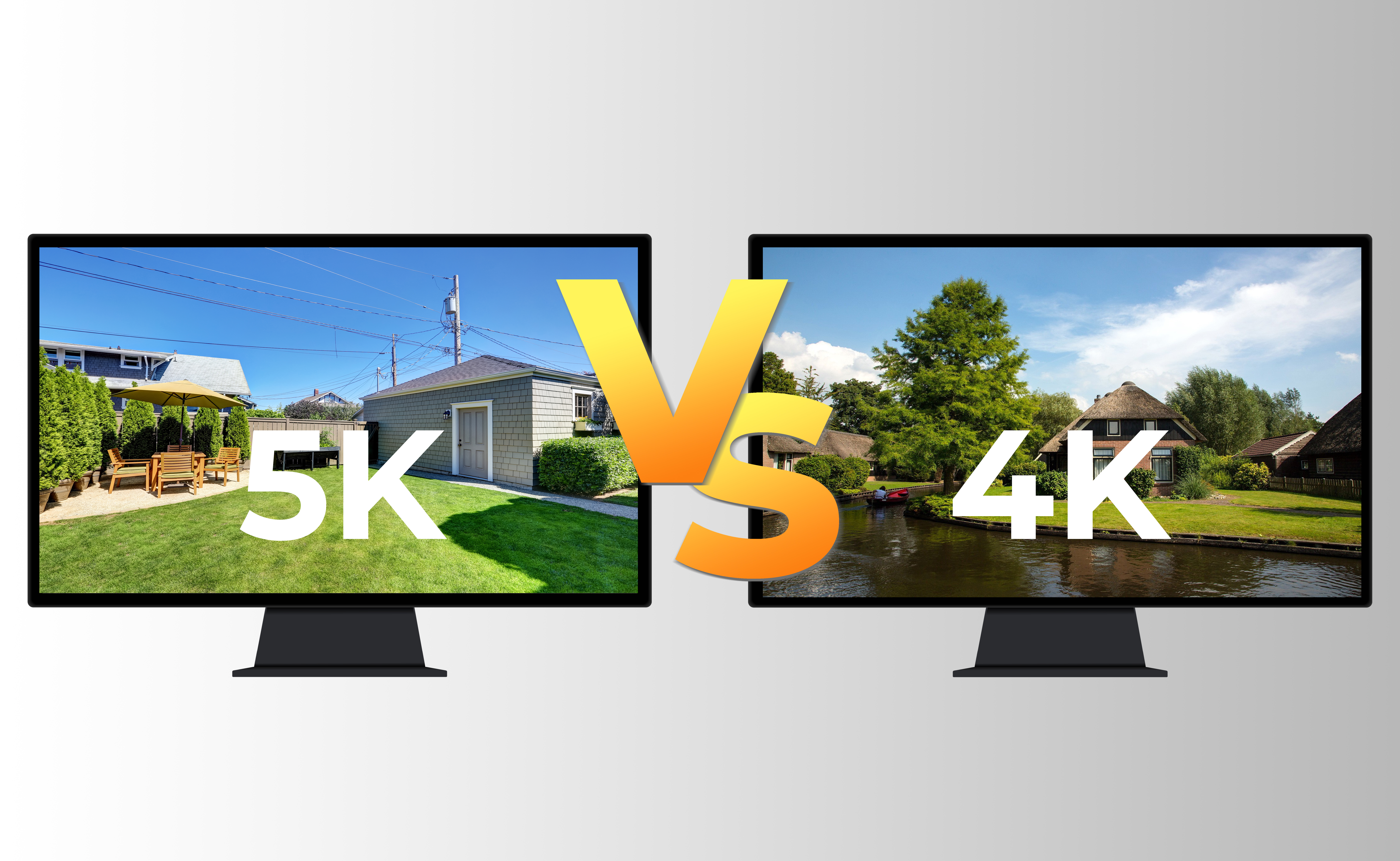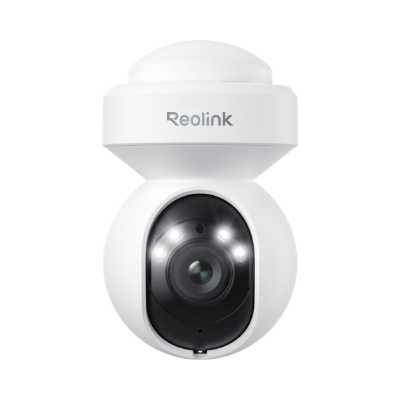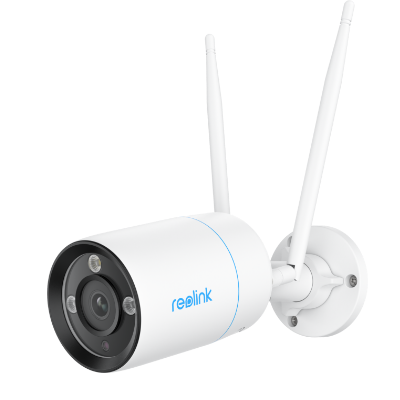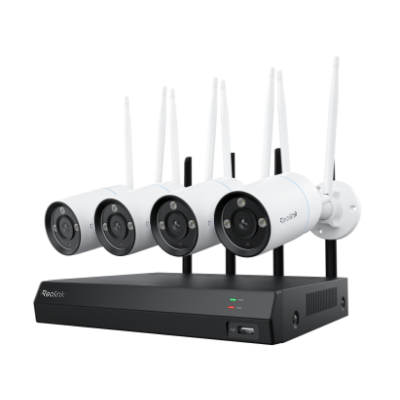4K vs 5K : A Quick Visualization of the Difference

Knowing the difference between HD, UHD, 1080p, and 4K can be confusing if you’re not super tech savvy, but we have you covered with this quick guide. While 4K resolution has been widely used in devices like security cameras, TVs, and PC monitors, 5K resolution is a lot less common.
Despite this, famous brands such as Apple and LG have released 5K monitors as the next step in resolution evolution. So what is the difference between 4K and 5K? Why do 5K monitors stand out against other devices? Let’s find out more!
What is the Difference of 4K and 5K: Understanding the Basics
4K means roughly 4,000 pixels wide and 5K means roughly 5,000 pixels wide. Just to indicate their names, 5K is relatively larger than 4K. 4K resolution refers to 3840 × 2160 pixels and the 5K resolution of 5120 × 2880 pixels offers 1280 extra columns and 720 extra lines than 4K.
Still confused about all the K’s and pixels that are used to describe resolutions? You’re not alone! Here are all the basics.
What is 4K?
4K is a type of resolution. The resolution is the number of pixels captured and displayed in an image and video. Pixels are the tiny dots that make up an image or frame. In theory, images of higher resolutions contain more of these pixels than lower-resolution ones.
Images and videos captured in 4K nearly contain 3840 x 2160 pixels in total, which is four times more than Full HD or 1920 x 1080 resolution, also known as 1080p.
The name 4K comes from the fact that images in this range have a horizontal resolution of around 4,000 pixels.
What is 5K?
Just like 4K, 5K is also a type of resolution. With a horizontal resolution of around 5,000 pixels, the most common 5K resolution is 5120 × 2880. This has just over seven times as many pixels as 1080p Full HD.
Typically used in computer monitors, 5K resolution can achieve a higher pixel density. However, 5K is not the standard format in digital television and digital cinematography, where the common standard is either 4K or 8K.
A Quick Comparison of 4K and 5K
To have a better understanding of the differences between 4K and 5K, here is an easy-to-digest comparison table.
4K vs 5K: Which to Choose
Both 4K and 5K are high resolutions that deliver sharp and crisp images. That being said, they both have their own advantages and disadvantages. Let’s break down some of these pros and cons so that you can make the right choice.
Monitor
For PC monitors, the standard resolution is Full HD 1080p, but many manufacturers have launched 4K monitors. Some advanced manufacturers have already launched 5K-resolution products. For example, Apple’s iMac series have Retina 5K displays and these 5K monitors are proving very popular with consumers.
There’s no denying that 5K monitors will definitely deliver higher image quality than 4K ones. However, as PC monitors need to be connected to a host or server, you also have to take other factors into consideration. You need to think about the hardware functions of your computer servers. For example, 5K monitors require more GPU and CPU resources than 4K ones.
GoPro
GoPro, a mini action camera, is becoming increasingly popular among adventurers, vloggers and outdoor sports enthusiasts. Unlike normal cameras, GoPros are smaller, waterproof and virtually indestructible. With just two or three buttons on the user interface, GoPros are always ready to capture beautiful scenarios.
From their first launch 15 years ago, GoPro products have already gone through several evolutions. This includes going from 720p all the way to 5K. There is no doubt that 5K GoPro will capture more details of nature or scenarios than 4K ones. However, 4K GoPros have been the mainstream on the market for years.
Compared to 4K GoPro, 5K GoPro will run out of power faster and the contents they capture will take up more space. In terms of editing issues, 5K videos require a faster machine to edit than 4K ones and not all editing software is compatible with 5K videos.
TV
5K is not the standard resolution for televisions. Advanced TVs have either 4K or 8K resolution, but there are still 5K TVs available on the market. In 2015, LG launched the world’s first 5K television. With a resolution of 5,120 x 2,880 pixels, 5K TVs can offer sharper and more realistic images than 4K ones. But the difference is not that noticeable.
Because of the limited offerings on the market, 5K TVs are not as common as 4K ones and their price is also higher. If you are looking for a high-resolution TV, 4K TV can be your first choice.
Gaming
For gamers, resolution can affect their gaming experience a lot. 4K gaming is currently the top-end gaming technology offered on the market right now. If you want to enjoy 5K clarity, you’ll have to buy a 5K monitor to play online games.
5K Monitors: New on the Market
As we’ve already mentioned, 5K resolution is typically used for PC monitors. So what is a 5K monitor? Do these monitors have some kind of special feature that make them better than 4K alternatives? Let’s find out.
Definition of 5K Monitor
A 5K monitor is a monitor that has a horizontal resolution of around 5,000 pixels. Common standard 5K resolution is 5120×2880 which fits the traditional 16:9 widescreen. The 5K monitor offers a 33% increase over 4K alternatives. 5K monitors are usually around 27 inches or larger, with some 40-inch and 49-inch options available.
5K Monitor: Pros & Cons
Compared to 4K and other monitors, 5K monitors have a ton of advantages and disadvantages to consider.
Pros:
- Sharp elements and details: As more pixels are counted in one image, 5K monitors deliver sharper elements and visuals.
- More room on the panel: That extra 33% of screen real estate allows you to work on a higher-resolution image, while still having room on the screen for other UI elements.
- No need to sacrifice desk space: The goal of 5K monitors is to squeeze more pixels into the same diagonal (often 27-inch) display, so there is no reason for them to take up more space than their 4K counterparts.
Cons:
- High price: The biggest downside of a 5K monitor is its price. The Apple and LG 5K offerings range between $1500 to $2000, which is much higher than the 4K ones.
- Fewer choices: In terms of 27-inch 5K monitors, only LG and Apple have compatible offerings and these products are primarily aimed at Mac users.
- Higher bandwidth requirements: To achieve higher resolution, 5K monitors take up more bandwidth. If Internet connections are not stable enough, 5K monitors just won’t work properly.
4K Monitor vs 5K Monitor: Which Is Better?
In terms of image quality, 5K monitors are definitely better than 4K ones. However, if you have a limited budget and you want your monitor to run on a Microsoft system, 5K monitors may not be a good choice. Almost all serious offerings of 5K monitors are aimed at Apple users and aren’t compatible with Microsoft Windows yet.
Factors to Consider When Buying Monitors
5K resolution is typically used for PC monitors, so when choosing your monitors, you need to take these factors into account.
Resolution
Just like TVs, the resolution of PC monitors is also important. It can define how many sharp elements and details your monitors can offer.
Two of the most commonly found resolution standards are Full HD (1920x1080 pixels) and 4K (Ultra High Definition, 3840x2160 pixels). In fact, the vast majority of computer monitors being sold today have a resolution that falls somewhere between those two. If you want better image quality, just choose the monitor with higher resolution.
Pixel density
The Pixel Density shows the number of pixels that fit on a 1-inch line, which is often referred to as PPI, or Pixels Per Inch. It’s often considered to be the real resolution of a monitor, as it takes into account the size of the screen as well as the resolution. The combination of these two factors will give you a more accurate way to measure the sharpness of a display.
Higher pixel density means higher image quality. For example, a 27-inch 5K monitor has a pixel density of 218 PPI. The downside is that pixel density is often not included in the specifications of monitors, so you’ll have to search for a pixel density calculator online to find out the information.
Color
When we look at a monitor or TV screen, we’re seeing different colors of light (red, green, and blue). The combination of these display modes and the color capability of your monitor will determine how many colors it displays. The term ‘bit depth’ is used to describe the number of bits used to describe a pixel.
The more bits there are, the more vivid colors we can see. For example, Apple 5K monitors have 10-bit color depth. If you care a lot about colors, ask sellers about the bit depth and add it to your comparison.
Brightness
Your monitor's brightness tells you how much light the screen can give out. The peak brightness, often known as the highest brightness, is measured in candela per square meter. This is more frequently referred to as nits. There are three brightness settings: below 300 nits, 300-350 nits, and above 350 nits.
Most 5K monitors sold on the market can go all the way up to 500 nits. If you prefer 4K monitors, they won’t let you down either. On average, 4K monitors will give 450 nits of brightness, but this can be pushed up to 600 nits in HDR mode.
Ports
The number of ports and their compatibility are also important when buying a monitor. Common types of HDMI ports used for PC monitors are Studio Display and Thunderbolt.
What you’re using your monitor with will have a significant impact on the port situation. Another benefit of hooking up to a laptop is that the speakers, webcam, and microphone are all handled by the same connection, requiring only one port. Many high-resolution monitors like 4K and 5K have multiple port choices. So, check all the devices you want to match your monitor and choose the compatible ports.
Usage
Finally, you should determine the usage of your monitors. If you are buying monitors for your company or your office, 5K monitors are not recommended as they require large bandwidth consumption and are expensive.
If you want a perfect monitor for personal use, like watching videos and personal jobs, you can consider 5K monitors. Overall, 5K monitors are not that suitable for working sites and 1440p or 1080p resolutions are more economical.
Exploring 4K Resolution Comparisons
When it comes to choosing the right resolution for your display or camera, it's essential to understand the differences between various 4K options. These links provide valuable insights into different 4K resolution comparisons:
- 4K vs. 8K: A detailed breakdown of the distinctions between 4K and 8K resolutions.
- 4K vs. 2K: Explore the pros and cons of 2K and 4K resolutions for your specific needs.
- 4K vs. 5K: Learn about the nuances between 4K and 5K resolutions and when each might be ideal.
- 4K vs. 5MP: Discover the differences between 5MP and 4K resolutions in security camera systems.
- 4K vs. 2160p: Delve into the relationship between 2160p and 4K resolutions for video content.
- 4K vs. Blu-ray: Understand how 4K compares to Blu-ray in terms of video quality.
- 4K Resolution Explained: Get a clear explanation of the pixel count in 4K resolution.
These resources will help you make an informed decision when selecting the 4K resolution that suits your specific requirements.
Introducing 4K in WiFi 6 Security Camera
High-resolution video surveillance is evolving, and new technologies are pushing boundaries like never before. For example, the "4K" concept has been introduced into WiFi 6 security cameras to open up new frontiers in home security.
4K WiFi 6 security cameras promise clarity in visuals and seamless connectivity. As one of the most advanced wireless technologies, WiFi 6 offers faster speeds and increased capacity compared to previous generations. This capability ensures that high-resolution 4K video streams seamlessly, even in environments with multiple connected devices.
Reolink recently launched its 4K WiFi 6 camera lineup for a smoother, more responsive user experience. Some products in this series include:
- Reolink E1 Outdoor Pro: It is a 4K 8MP smart PTZ WiFi camera with auto tracking. This camera is ideal for outdoor use and ensures effective daily and night surveillance.
4K WiFi PTZ Camera with Auto-Tracking
4K 8MP Super HD, Smart Person/Vehicle Alerts, 355° Pan & 50° Tilt & 3X Optical Zoom, Auto Tracking, Color Night Vision.
- Reolink RLC-810WA: As a dual-band WiFi 6 security camera, it boosts 4K 8MP footage with reduced latency. Users can experience live streaming from anywhere with an Internet connection.
4K WiFi 6 Surveillance Camera
4K 8MP Ultra HD, Dual-Band WiFi 6, Color Night Vision, IP67 Waterproof, Smart Detection, Two-Way Audio, Built-in Siren.
- Reolink RLK12-800WB4: This 4K WiFi 6 security camera kit is the best for those seeking a comprehensive security solution. Combining a wireless NVR and four 4K WiFi 6 security cameras makes the surveillance more reliable and efficient.
4K Security Kit with Next-Gen WiFi 6
4 pcs 4K Ultra HD Security Cameras; Dual-Band WiFi 6; 2TB HDD 12-Channel NVR for 24/7 Recording; Peron/Vehicle/Animal Detection; IP67 Weatherproof.
Beyond 4K and 5K Resolution Security Camera Recommendation
Duo 3 PoE is an impressive security camera equipped with advanced features. As the first 16MP UHD dual-lens PoE camera on the market, it delivers exceptional image quality. With its 180° panoramic view, it provides extensive coverage of the surroundings. Additionally, the camera features motion tracking technology and color night vision, ensuring comprehensive surveillance day and night.
Groundbreaking 16MP Dual-Lens PoE Camera
16MP UHD, Dual-Lens, Motion Track, 180° Wide Viewing Angle, Power over Ethernet, Color Night Vision.
FAQs
Is 5K the highest resolution?
Of course not. There are many higher resolution ranges than 5K, the most common one being 8K. 8K is widely used in the television industry but 5K is typically used for PC monitors. With the constant development of technologies, there are higher resolutions on the way.
Do 5K monitors exist?
Yes, 5K monitors do exist. But the offerings on the market are relatively limited. In terms of 27-inch ones, only LG and Apple have compatible offerings and these products are aimed at Mac users.
How do I choose the right monitor?
There are many factors to consider: resolution, pixel density, image quality, number and compatibility of ports, etc. You also need to consider your budget and what you actually need in order to get the most suitable monitor.
Are 5K monitors better than 4K?
In terms of image quality, 5K monitors are definitely better than 4K ones. However, if you take other factors into consideration, 5K monitors don’t have that many advantages over 4K alternatives.
Conclusion
Both 4K and 5K are high-end resolutions, which deliver sharp and clear images that are extremely lifelike. However, while 4K is widely used in different industries, like television, movies, and security camera,. 5K is typically applied to PC monitors. 5K monitors can offer better image quality, but this also means higher costs, more storage, and higher bandwidth consumption. So which monitors do you prefer? 4K or 5K ones? Leave your comments and opinions below!
Search
Be in the Know
Security insights & offers right into your inbox




